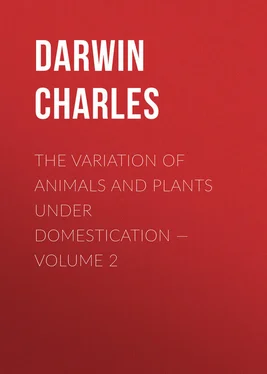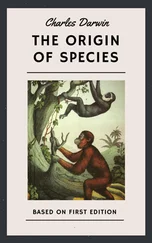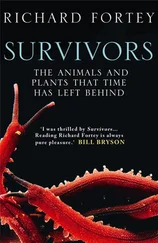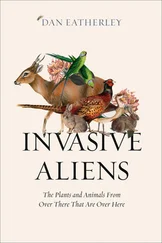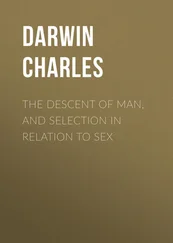Charles Darwin - The Variation of Animals and Plants under Domestication — Volume 2
Здесь есть возможность читать онлайн «Charles Darwin - The Variation of Animals and Plants under Domestication — Volume 2» — ознакомительный отрывок электронной книги совершенно бесплатно, а после прочтения отрывка купить полную версию. В некоторых случаях можно слушать аудио, скачать через торрент в формате fb2 и присутствует краткое содержание. Жанр: foreign_antique, foreign_prose, на английском языке. Описание произведения, (предисловие) а так же отзывы посетителей доступны на портале библиотеки ЛибКат.
- Название:The Variation of Animals and Plants under Domestication — Volume 2
- Автор:
- Жанр:
- Год:неизвестен
- ISBN:нет данных
- Рейтинг книги:3 / 5. Голосов: 1
-
Избранное:Добавить в избранное
- Отзывы:
-
Ваша оценка:
- 60
- 1
- 2
- 3
- 4
- 5
The Variation of Animals and Plants under Domestication — Volume 2: краткое содержание, описание и аннотация
Предлагаем к чтению аннотацию, описание, краткое содержание или предисловие (зависит от того, что написал сам автор книги «The Variation of Animals and Plants under Domestication — Volume 2»). Если вы не нашли необходимую информацию о книге — напишите в комментариях, мы постараемся отыскать её.
The Variation of Animals and Plants under Domestication — Volume 2 — читать онлайн ознакомительный отрывок
Ниже представлен текст книги, разбитый по страницам. Система сохранения места последней прочитанной страницы, позволяет с удобством читать онлайн бесплатно книгу «The Variation of Animals and Plants under Domestication — Volume 2», без необходимости каждый раз заново искать на чём Вы остановились. Поставьте закладку, и сможете в любой момент перейти на страницу, на которой закончили чтение.
Интервал:
Закладка:
Charles Darwin
The Variation of Animals and Plants under Domestication — Volume 2
CHAPTER 2.XIII
INHERITANCE continued — REVERSION OR ATAVISM.
DIFFERENT FORMS OF REVERSION. IN PURE OR UNCROSSED BREEDS, AS IN PIGEONS, FOWLS, HORNLESS CATTLE AND SHEEP, IN CULTIVATED PLANTS. REVERSION IN FERAL ANIMALS AND PLANTS. REVERSION IN CROSSED VARIETIES AND SPECIES. REVERSION THROUGH BUD-PROPAGATION, AND BY SEGMENTS IN THE SAME FLOWER OR FRUIT. IN DIFFERENT PARTS OF THE BODY IN THE SAME ANIMAL. THE ACT OF CROSSING A DIRECT CAUSE OF REVERSION, VARIOUS CASES OF, WITH INSTINCTS. OTHER PROXIMATE CAUSES OF REVERSION. LATENT CHARACTERS. SECONDARY SEXUAL CHARACTERS. UNEQUAL DEVELOPMENT OF THE TWO SIDES OF THE BODY. APPEARANCE WITH ADVANCING AGE OF CHARACTERS DERIVED FROM A CROSS. THE GERM, WITH ALL ITS LATENT CHARACTERS, A WONDERFUL OBJECT. MONSTROSITIES. PELORIC FLOWERS DUE IN SOME CASES TO REVERSION.
The great principle of inheritance to be discussed in this chapter has been recognised by agriculturists and authors of various nations, as shown by the scientific term ATAVISM, derived from atavus, an ancestor; by the English terms of REVERSION, or THROWING-BACK; by the French PAS-EN-ARRIERE; and by the German RUCKSCHLAG, or RUCKSCHRITT. When the child resembles either grandparent more closely than its immediate parents, our attention is not much arrested, though in truth the fact is highly remarkable; but when the child resembles some remote ancestor or some distant member in a collateral line, — and in the last case we must attribute this to the descent of all the members from a common progenitor, — we feel a just degree of astonishment. When one parent alone displays some newly-acquired and generally inheritable character, and the offspring do not inherit it, the cause may lie in the other parent having the power of prepotent transmission. But when both parents are similarly characterised, and the child does not, whatever the cause may be, inherit the character in question, but resembles its grandparents, we have one of the simplest cases of reversion. We continually see another and even more simple case of atavism, though not generally included under this head, namely, when the son more closely resembles his maternal than his paternal grand-sire in some male attribute, as in any peculiarity in the beard of man, the horns of the bull, the hackles or comb of the cock, or, as in certain diseases necessarily confined to the male sex; for as the mother cannot possess or exhibit such male attributes, the child must inherit them, through her blood, from his maternal grandsire.
The cases of reversion may be divided into two main classes which, however, in some instances, blend into one another; namely, first, those occurring in a variety or race which has not been crossed, but has lost by variation some character that it formerly possessed, and which afterwards reappears. The second class includes all cases in which an individual with some distinguishable character, a race, or species, has at some former period been crossed, and a character derived from this cross, after having disappeared during one or several generations, suddenly reappears. A third class, differing only in the manner of reproduction, might be formed to include all cases of reversion effected by means of buds, and therefore independent of true or seminal generation. Perhaps even a fourth class might be instituted, to include reversions by segments in the same individual flower or fruit, and in different parts of the body in the same individual animal as it grows old. But the two first main classes will be sufficient for our purpose.
REVERSION TO LOST CHARACTERS BY PURE OR UNCROSSED FORMS.
Striking instances of this first class of cases were given in the sixth chapter, namely, of the occasional reappearance, in variously-coloured breeds of the pigeon, of blue birds with all the marks characteristic of the wild Columba livia. Similar cases were given in the case of the fowl. With the common ass, as the legs of the wild progenitor are almost always striped, we may feel assured that the occasional appearance of such stripes in the domestic animal is a case of simple reversion. But I shall be compelled to refer again to these cases, and therefore here pass them over.
The aboriginal species from which our domesticated cattle and sheep are descended, no doubt possessed horns; but several hornless breeds are now well established. Yet in these — for instance, in Southdown sheep — "it is not unusual to find among the male lambs some with small horns." The horns, which thus occasionally reappear in other polled breeds, either "grow to the full size," or are curiously attached to the skin alone and hang "loosely down, or drop off." (13/1. 'Youatt on Sheep' pages 20, 234. The same fact of loose horns occasionally appearing in hornless breeds has been observed in Germany; Bechstein 'Naturgesch. Deutschlands.' b. 1 s. 362.) The Galloways and Suffolk cattle have been hornless for the last 100 or 150 years, but a horned calf, with the horn often loosely attached, is occasionally produced. (13/2. 'Youatt on Cattle' pages 155, 174.)
There is reason to believe that sheep in their early domesticated condition were "brown or dingy black;" but even in the time of David certain flocks were spoken of as white as snow. During the classical period the sheep of Spain are described by several ancient authors as being black, red, or tawny. (13/3. 'Youatt on Sheep' 1838 pages 17, 145.) At the present day, notwithstanding the great care which is taken to prevent it, particoloured lambs and some entirely black are occasionally, or even frequently, dropped by our most highly improved and valued breeds, such as the Southdowns. Since the time of the famous Bakewell, during the last century, the Leicester sheep have been bred with the most scrupulous care; yet occasionally grey-faced, or black-spotted, or wholly black lambs appear. (13/4. I have been informed of this fact through the Rev. W.D. Fox on the excellent authority of Mr. Wilmot: see also remarks on this subject in an article in the 'Quarterly Review' 1849 page 395.) This occurs still more frequently with the less improved breeds, such as the Norfolks. (13/5. Youatt pages 19, 234.) As bearing on this tendency in sheep to revert to dark colours, I may state (though in doing so I trench on the reversion of crossed breeds, and likewise on the subject of prepotency) that the Rev. W.D. Fox was informed that seven white Southdown ewes were put to a so-called Spanish ram, which had two small black spots on his sides, and they produced thirteen lambs, all perfectly black. Mr. Fox believes that this ram belonged to a breed which he has himself kept, and which is always spotted with black and white; and he finds that Leicester sheep crossed by rams of this breed always produce black lambs: he has gone on recrossing these crossed sheep with pure white Leicesters during three successive generations, but always with the same result. Mr. Fox was also told by the friend from whom the spotted breed was procured, that he likewise had gone on for six or seven generations crossing with white sheep, but still black lambs were invariably produced.
Similar facts could be given with respect to tailless breeds of various animals. For instance, Mr. Hewitt (13/6. 'The Poultry Book' by Mr. Tegetmeier 1866 page 231.) states that chickens bred from some rumpless fowls, which were reckoned so good that they won a prize at an exhibition, "in a considerable number of instances were furnished with fully developed tail-feathers." On inquiry, the original breeder of these fowls stated that, from the time when he had first kept them, they had often produced fowls furnished with tails; but that these latter would again reproduce rumpless chickens.
Analogous cases of reversion occur in the vegetable kingdom; thus "from seeds gathered from the finest cultivated varieties of Heartsease (Viola tricolor), plants perfectly wild both in their foliage and their flowers are frequently produced;" (13/7.
Читать дальшеИнтервал:
Закладка:
Похожие книги на «The Variation of Animals and Plants under Domestication — Volume 2»
Представляем Вашему вниманию похожие книги на «The Variation of Animals and Plants under Domestication — Volume 2» списком для выбора. Мы отобрали схожую по названию и смыслу литературу в надежде предоставить читателям больше вариантов отыскать новые, интересные, ещё непрочитанные произведения.
Обсуждение, отзывы о книге «The Variation of Animals and Plants under Domestication — Volume 2» и просто собственные мнения читателей. Оставьте ваши комментарии, напишите, что Вы думаете о произведении, его смысле или главных героях. Укажите что конкретно понравилось, а что нет, и почему Вы так считаете.
